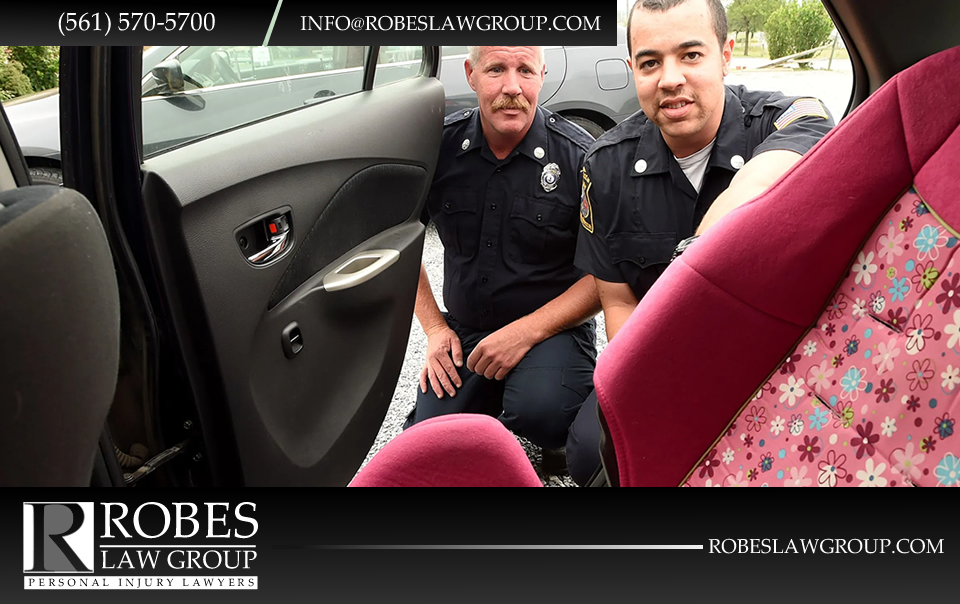Are You Using the Right Car Seat for Your Child?

Car seat safety is always a hot topic, especially as new laws go into effect across the country establishing new, improved guidelines for parents regarding their child’s safety. These new laws often force parents into asking if their infants, toddlers and children are safe in their vehicles or if they too need to invest in further protection. Unfortunately, many car seats boast defective designs that could end up harming a child in a vehicle accident.
Types of Car Seats
According to BestCarSeatHub.com, there are three main types of car seats: infant car seats, convertible car seats, and booster seats.
Infant car seats are always used rear-facing and generally for babies newborn to at least 1 year old (preferably 2 years old) and up to 30 pounds or more. Since the American Academy of Pediatrics recommends children sit rear-facing for as long as possible, look for one with a wide weight range. They should ride in a rear-facing seat until their heads are at least 1 inch below the top of the seat.
Convertible car seats start out as rear-facing infant seats then convert to forward-facing and sometimes even convert to a booster seat (often called all-in- one or 3-in- one). In forward-facing mode, the weight range is typically 20 – 65 pounds. Booster mode will accommodate around 40 – 100 pounds or more.
Booster seats can be part of a convertible seat or bought as a separate item. They can be high-backed or backless. Backless models are great for older children who can buckle and unbuckle themselves safely. Generally, booster seats will have a weight range of 40 – 100 pounds or more, and a minimum age of 4 years old.
Do some research to find a child restraint with the best rating for 2018.
Buying the Right Car Seat and Using It Properly
Purchasing a safe, well-designed car seat is only half of the battle for parents. If a parent or caregiver does not know how to properly use that car seat, they could be putting their child at risk. Some well-known defects with car seats in the past include:
- Weak car seat shells
- Defective handles that break while lifting
- Flammable car seat materials
- Weak construction and base separation
- Rotations
- Sudden releases due to defective harness or LATCH systems
Some parents will opt to purchase less expensive car seat models because they know their children quickly grow out of them. The issue, however, is that the more inexpensive brands often do not have the same safety features that are considered “standard” by more expensive manufacturers. Parents should never cut costs if it means sacrificing safety.
Tips for Purchasing the Right Car Seat
For parents looking to purchase a new infant seat or booster seat, here are some tips to consider first:
- Consider investing into a convertible car seat. The longer a child sits in a rear-facing car seat, the safer they will be. Some states even require a child ride in a rear-facing seat for as much as two years, while others require only the first year. Newer car seats today are convertible, which means they can be eventually turned to face forward and accommodate the child up to as large as 80 pounds and 50 inches in height – depending on the brand.
- Be highly selective when it comes to purchasing a car seat. The more you pay, the more safety features and peace of mind you will get with your car seat. Expensive car seats often have features such as five-point safety harnesses, adjustability, additional padding and even side-impact protection for your child’s head and chest.
- Know how to install the car seat you have purchased. Car seats must be installed properly in order to be effective. Since 2002, all car manufacturers have been required to install the LATCH system within their vehicles; therefore, it is likely you will have a vehicle equipped with the LATCH system. This anchors the car seat from the bottom and some vehicles may also have a top tether for the seat belt. Read manufacturer instructions carefully regarding installation and have it checked by a professional before having your child ride in the side.
- Never purchase a used car seat. Used car seats may have been left outside, improperly handled or could have expired. Also, the car seat could have been involved in a previous accident, which means its integrity is compromised.
- Keep an eye out for recalls. When you purchase a car seat, register it with the manufacturer so that you can be notified of any recalls occurring for your car seat model.
Information provided on this article/blog post is for informational purposes only.
Speak with an Attorney if Your Child Was Injured
If your child was injured in an accident due to faulty manufacturing or the negligence of another driver, you need an attorney that has experience advocating for clients that have suffered serious injuries. Robes Law Group can determine if you have grounds to seek compensation for your child’s medical expenses, your lost wages and pain and suffering. Call us today at (561) 570-5700 or use the button below to fill out an online contact form to schedule a consultation.
